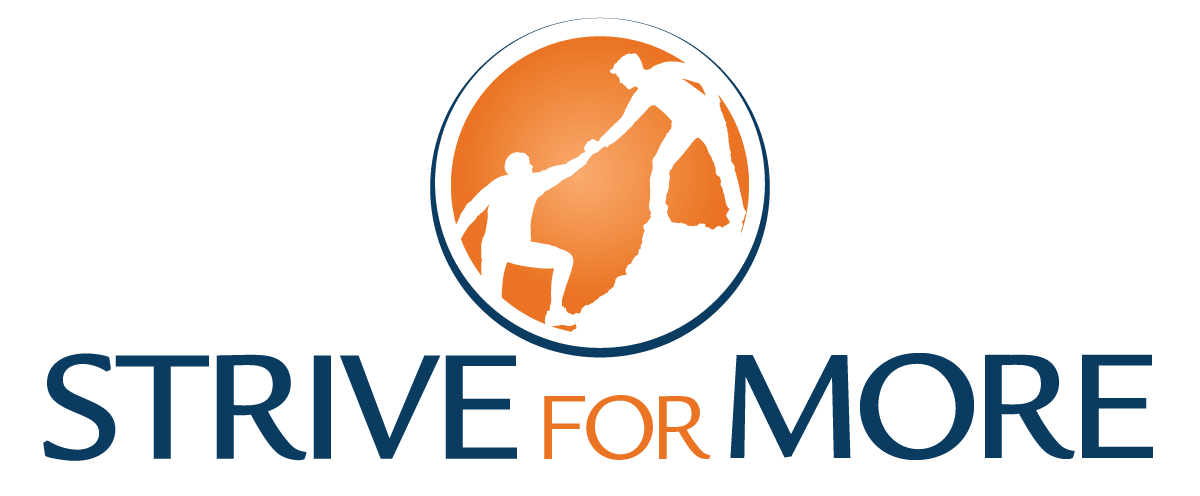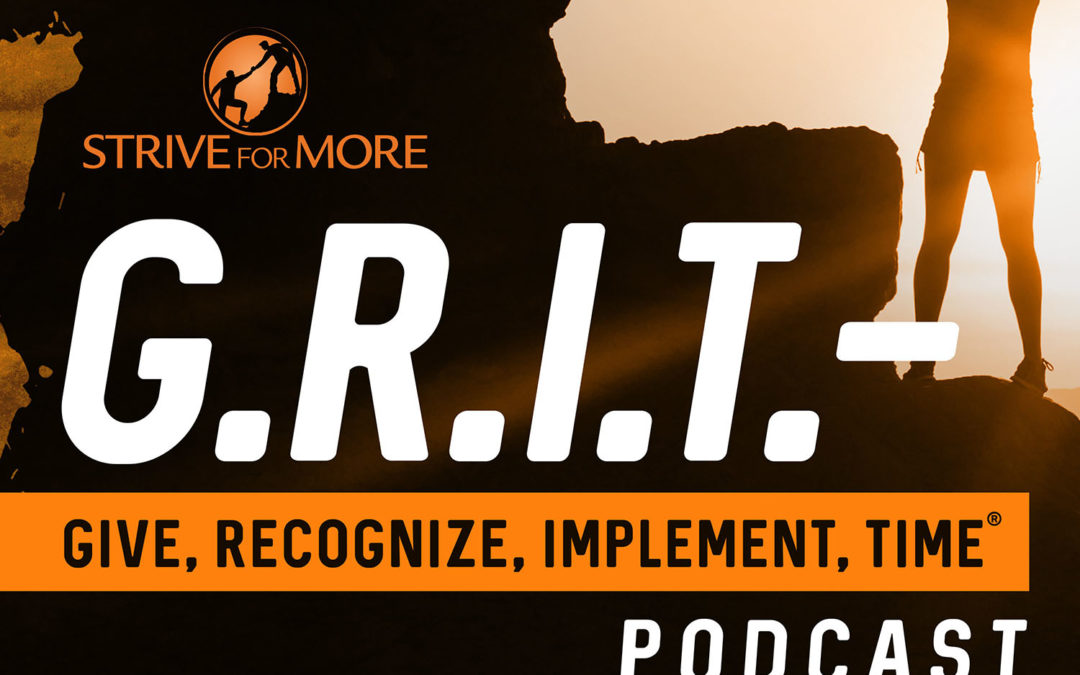Episode Transcript
Hello, again, everybody, I’m Steve Nathenson, CEO and founder of Strive for More. And I want to continue our conversation from last time, where we talked about what should leadership development look like. Now I’m going to branch into what do we need to develop our leaders?
So the first of which, honestly, it’s a basic understanding of what development is needed. Can I understand my leaders well enough to know where we really should target and pinpoint our development offerings to so that we can successfully get them what they need? This is a quintessential question. When we’re talking about, what do I need to put in place, we often skip over this part. We first have to understand what is it that they need that we truly want to solve and put into place. So just like as in business, when we ask the question is, what is it that my customers truly need? Because when I solve that need, I can make a living as a business. I could sell to my customers. I could fulfill what they’re truly looking for, for me. It’s the same thing when we turn in I internally to our own individuals in our organization, specifically our leaders. What is it that they actually need? And this is a hugely important step because, just because we offer certain opportunities, doesn’t mean it’s going to be helpful, or it’s what they’re really looking for.
I harp on that only because lack of career growth and advancement and opportunities to develop is one of the number one reasons why individuals leave organizations, and why leaders leave roles. So it’s really important to understand fundamentally what our leaders truly do need. Last time, we touched upon this a little bit of the six key development areas and leadership development, being leadership itself, communication, personal growth, which incorporates emotional intelligence, mindset, mentality, social intelligence, building trust, relationships. And then the other three areas, engaging, uniting, motivating, inspiring people, thinking and acting strategically, and then coaching and developing others. So those are six great buckets to start exploring what is it that we truly need to put in place to help develop my leaders.
So, as we’re talking, I hope something is forming here, which is really understanding who our leaders are and what they specifically need, knowing from them. And this can be done in a multitude of different ways, through conversations, through surveys. But the quintessential thing there is asking them, understand specifically from them what it is that they truly need because that allows us to successfully put into place our leadership development plan and the offerings. So that very basic thing is understanding, first and foremost, what is it that our leaders truly need. These six key buckets that we mentioned, that’s a great place to start.
Our leadership needs development assessment is a very easy, free tool to use, to help understand that. You can visit www.striveformore.com, go to the resources menu option. And under there, you’re going to see this needs assessment. It’s really quick, asks you to help evaluate the current state of your organization in these six key areas, and help spit out what can be helpful.
So once we look at our organization internally through this lens of these six key development areas, and by asking our leaders themselves, we now have a foundation that allows us to put into place a plan forward to develop our leaders. So first and foremost, what do I need? An understanding of my leaders. Where am I, perhaps, missing the mark in these six key areas? And what is it that they’re actually looking for? This allows me then to form a plan to help develop my leaders. So basic understanding who they are, what they need, and where we’re missing the mark?
The next step then is, how do we do that? What do I need to develop them? Part of what we do, unfortunately, is use bandaid fixes or patchwork as I call it. And that’s bringing in, say, one day training, that’s taking seminars. As I touched upon last time, part of the issue with that is we can only walk away with so many things from that conversation, from that training, from that seminar. And yes, we may see some return immediately, but that typically dies down over time. And the reason is we don’t continue that growth and develop. We don’t continue to put into play what we’ve learned, and we forget about it. So when we talk about what do we need to develop those leaders, once we have a base understanding, as we’ve talked about, what it is that they need, what it is that they want, where we’re missing the mark, then we can put into play a plan that helps truly ingrain these habits in these behaviors over time to develop them.
Leadership institutes are great opportunities for this. Coaching is a phenomenal opportunity of it. And that’s why I actually here, at Strive for More, we offered those two offerings. It’s because those are things that help ingrain behaviors over time, versus just being bandaid fixes, surface level work that don’t go beyond that. So when we develop leaders and we ask that question, what do I need? The second thing is really understanding what are the right offerings that are going to help ingrain what it is that we want? What is the right offering that’s going to shift our organization and culture in the direction that we want to go and make it long-lasting at sustainable, versus just a chip shot, versus just something that’s short-lived? We want something that truly ratifies the culture, the way that we want it to be done. And that takes time. Leadership development takes time to do. So that second key thing is having a fruitful program that ingrains long-lasting, sustainable change versus something that’s just surface level and is short-lived.
The next key element is a blended approach. A lot of times, when we’re looking at what it is that I need and what it is that I need to help develop others, we tend to forget about what’s truly going to help answer things that they have questions on. Meaning, are we just from a platform speaking to them and spewing the information at them, or are we truly giving them what they need to actually practice the tools to practice it, to learn from it, and to adopt it?
There is a teaching methodology that I subscribe to, Tell-Show-Do. What that means is I can introduce a topic and a tool. I can show how of that tool actually works. And then I have those folks that I’m working with, use it, go through a real world example, Tell-Show-Do. This is the thing that we need when we’re developing our leadership. So because of it, there’s a natural blend of education and coaching that goes with it. The educational part is introducing them to what they need. For instance, when I step out of being an individual contributor into being a manager for the first time, is drastically different. I’m not, say, responsible for writing code on a daily basis. I’m now responsible for allocating work, dealing with individuals as people, helping them grow and develop their career, setting missions, setting visions, allocating resources, prioritizing projects, delegating. It’s a lot more than just sitting down and writing lines of the code.
So part of this tell in this education is introducing folks to the proper things that we’re missing the mark on, the things that they’ve asked for. How do I have better work life balance? How do I better manage my inbox? For example. How do I set boundaries around communication so I’m not constantly responding at 11:00 PM at night? We can take what we learned from step one, understanding our audience, and blend that in to the third step, which is rolling out the actual leadership development tool.
Coaching comes into play because it allows for the unique individuality of each leader, and helping harness what’s going to work best for them. There’s a lot of techniques and practices out there, but what truly helps people lead and be inspirational, be the leaders that we want them to be is the one-on-one work to help them digest that education and apply it in a way that’s truly right for them and those that they lead. So this third and final step really talks about employing a proper methodology of Tell-Show-Do through education, and helping people practically apply that and learn to apply it in a way that’s truly right for them, which is where coaching comes into play.
So the three quick things about what do I need to develop my leaders, base understanding of who they are. The second thing is an offering and a path forward that creates long-lasting change versus just surface level short-lived change. And then the third thing is the right approach to that offering that gives the education that’s necessary to help people grow and develop, and also the tools and the means to really harness and embrace it and apply it for them correctly because it’s truly right for them. That’s this third and final component of what we need to develop our leaders.
If you have any questions, thoughts, you want to know more, please let me know. I’m more than happy to address the real life questions that I’m hearing from folks like yourself. Just let me know, drop me line. And until the next time, be the movement in your life.
Listen to all of our episodes here.
Learn More About How We Help You Harness Your Resilience Through G.R.I.T. – Give, Recognize, Implement, Time®& Find More Actions You Can Take Right NOW!
To learn more about our signature coaching approach which DOES help people all over the world stay focused, overcome, and achieve, please click here.
Want to Assess Your G.R.I.T. – Give, Recognize, Implement, Time® & get a tangible gauge of key human characteristics that WILL make you successful?
Take our G.R.I.T. – Give, Recognize, Implement, Time assessment now and find out!

